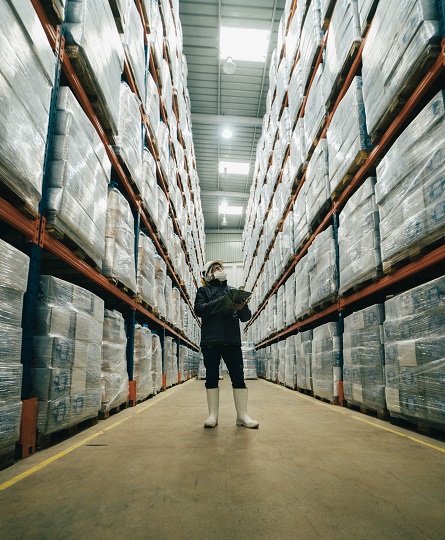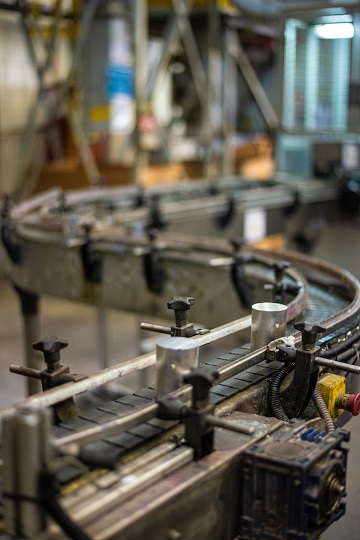You need production planning and production management to make sure they go smoothly.
You must know that the way a company makes things will affect how well things go. Production planning is a great way to figure out the best way to make things.
Usually, a company’s production system is set up before it starts making things, and how well the production system works will affect how the company makes things.
If you have a good system for making things, you will also have a good process for making things. On the other hand, a bad production system can make the process of making something not as good as you would like.
But a good production system doesn’t always mean that the production process will go well if it isn’t paired with good production planning and control.
You need a good production system and production planning for the production process to go smoothly. Making sure that your production process runs smoothly can be done through production systems, production planning, and production control.
Good production planning must be in line with how the company manages its production process. The intended production process control function includes planning, figuring out work orders, figuring out how long the work will take, giving out work orders, and watching how the work is done.
Production control should be done using rules and methods to make sure that the company’s systems are designed and used as well as possible.
This idea or method will help organize the parts of the work system that have to do with work, like people, raw materials, machines, and so on.
Before we keep talking about this important topic, make sure you’ve also joined the scmguide telegram channel, where I share many more tips about supply chain management.
Table of Contents
What is production planning?
Production planning is making a plan for how to make a product, how many to make, how much it will cost, and how to get it. Production planning is usually done for one period, so it is part of the operational planning in the company.
When making a production plan, companies should think about how to make production as efficient as possible so they can get the most out of their production process for the least amount of money.

Production planning is also a way to organize resources so that goods can be made in a certain amount of time based on what was planned or predicted. Things like labor, raw materials, machines, and other tools that are needed to make a product are examples.
In production planning, companies need to be able to “guess” or estimate how much demand there will be for the product they plan to make. So, forecasting is an important part of production planning, which should lead to a real picture of how production will turn out.
Production planning is important for a company to stay in business because without it, the company will not be able to reach its goals effectively and efficiently. If you don’t plan, you’ll waste a lot of time and money on things that don’t matter.
Why is production planning so important?
Production planning is important because it sets up an efficient way to make something based on what the customer and business need. This helps both processes that depend on the customer, like getting something to them on time, and processes that don’t depend on the customer, like how long it takes to make something.
Lead time is cut down by a good production plan.
Lead time is the time between when an order is placed and when it is finished, packed, and sent out. Lead time can mean different things depending on the company and the kind of production planning that needs to be done.
In supply chain management, for instance, lead time is the amount of time it takes for parts to be shipped from suppliers. This is because companies that make things need to know when parts will arrive so they can do material requirements planning (MRP) correctly. This is especially important when production is limited or done “just in time” (JIT).
Production planning activities
Control tasks that companies need to do to make sure production runs smoothly include production planning.
Production planning needs to take into account all of the company’s limitations, especially those related to the supply of materials and the needed capacity, so that the company can still make money by making products that people want.
With production planning, the finished product will be of good quality and ready at the right time. Some things that need to be done for production planning are:
- Start with the big picture when making a production plan.
- Make plans for sales and try to “guess” what people want.
- Figure out how long it will take to finish each item.
- Plan how to get raw materials and spare parts from outside the company.
- Plan how each order will be done at each workstation.
- Tell customers who have ordered something when it will be ready.
Types of production planning
A business has both short-term and long-term plans for how to make things. Short-term production planning is an operational plan because production tasks are planned to be done next year or maybe even sooner.
Companies can keep track of how their workers, raw materials, and production facilities are used with short-term production planning. So, short-term production planning is always about making sure production operations go smoothly. “Operational planning” is another name for this kind of planning.
On the other hand, measuring the level of production activity over more than one year is part of long-term production planning. Most of the time, five or ten years from now. Long-term production planning tries to keep track of how the capacity of machines or equipment grows, how factories grow, and how new products are made.
You might also like:
- 5 Things That Can Go Wrong with Your Supply Chain
- 9 of the Most Common Reasons Why You Might Have Excess Stock
How is production planning done?
In fact, the most important thing that production planning does is help plan and control the flow of materials so that the company can reach its goal of making as much money as possible. But production planning isn’t just about these main things:
- Make sure that the strategic plan and sales plan for the company are always in sync.
- As a way to measure performance as a part of the production planning process.
- Make sure that your production capabilities always match the plans you’ve made for production.
- Compare what was actually made with what was planned.
- To help you decide what to change.
- Take care of raw materials and finished goods inventories so that production goals and strategic plans can be met.
- Is in charge of making and following the company’s master production schedule.
- Find out what people want, how much they want it, and when they want it.
- Keeping a balance between production needs and ways to fill orders is a cost-effective way to figure out how much raw material to order.
- Compare the plans for stock and make changes to the plans for production at certain times.
- Make detailed production schedules, assignments, machine loading, and human resource (HR) plans based on how much capacity is available and how demand changes in one production period.
Production planning is a good way to make a good plan
Production planning is the process of figuring out what tools are needed to make a product, buying them, and setting them up.
Some of the things that are done in production planning can help find out how many people want the goods that are being made.

With production planning, the company can also make a plan for all of its production needs so that it can reach its goals.
If you want the production process to go smoothly, you should plan it in a very organized way.
To use production planning well, companies need to make good plans so that the production process goes as planned.
Here are some good ways to plan how to make things.
Make good forecasts
To get the most out of production planning, the first thing that needs to be done is accurate forecasting. Companies have to choose how many items they want to make. You can “guess” what people want to do this.
Forecasting will help companies not only make the right amount of goods, but also control how much of each item they buy so they don’t run out.
Forecasting can mean making predictions about things that haven’t happened yet. So, for Forecasting to work, companies must be able to predict something that will be right at the right time based on scientifically analyzed data from the past.
Statistics make up most of the information that companies use. Companies should use forecasting to look at their production planning and figure out what could happen in the future in the production process. For example, how many products can be made or how much trash can be made. With these different estimates, the company can decide whether to help or not.
Forecasting needs to be done in a way that is appropriate, systematic, and accountable for production planning. So, forecasting is a very important part of making decisions because it uses information from the past.
The data used must also be in a form that lets it be analyzed in a certain way. In this case, companies need to do a few things before they can make predictions, like collect, use, and analyze historical data and try to figure out what will happen in the future. The company must also be able to make good guesses.

Every business wants to be able to make predictions that make uncertainty less of a problem. In other words, the company does forecasting to get results that minimize the mean square error, mean absolute error, and so on.
Forecasting is the process of figuring out what people want by looking at past sales and inventory data.
You can make this easier now with many sales systems or apps. So, predictions can be close to true because the data that is available is good data.
Understanding production capacity
How much a company can make is an important part of its production system. So, for production planning, the company needs to know how much can be made.
If there isn’t enough space, it will be hard to meet everyone’s needs and a lot of time and energy will be wasted. In the end, customers will be less happy, and the business will have less chance of making money.
You can figure out how much you can make by looking at how productive your workers are, how much you earn, and how well your machines work. Now, companies can use automated programs to figure out how much money they can make.
Resource planning
To make a good production plan, you need to know how to plan resources in the making process.
Write down the fewest people and raw materials that are needed to make a product or provide a service.
You also need to think about what machines and systems you will need to make your production plan work.
Inventory control
People often make different kinds of waste when they make something. So, production planning needs to work to reduce waste in the production process.
The key is to keep track of stock (inventory).
Companies need to make sure they don’t make more products than people want before they start making them.

Companies will be able to save money and make better use of their limited storage space if they keep track of their inventory. Stock does not have to stay in the warehouse for too long.
On the other hand, businesses need to make sure that their suppliers can always get them the raw materials they need on time. This is a very important step to take so that the company doesn’t run out of raw materials.
So, businesses need an inventory management system, which is very important for figuring out how to make things.
An inventory management system that sends alerts when supplies are running low can help the company plan its inventory. And now there are many inventory management systems that can be used to automatically order stock from suppliers.
You might also like:
- 10 Ways to Reduce Supply Chain Costs by a Huge amount
- 8 Good Ways to Bring Down the Cost of Running a Warehouse
Automation of the production planning system
The next way to use production planning is to use technology, which is a strong factor that helps make the production process go more smoothly.
Companies should use a variety of technologies, especially ones that can be done automatically. For example, you can use an application for a production planning system that can automate scheduling and make production plans.
With this system, companies can find out about the stages of production, keep track of information about raw materials, and share this information.
Companies can also figure out how many workers and what else they need before they can start making something.
Maintain your machines and tools on a regular basis
Every company wants to avoid downtime or production stops caused by different things when they plan their production. But most of the time, production stops because something is wrong with the machine. If the machine breaks, there will be no more work, and the company will lose money.

When making a plan for production, companies need to include steps that will keep them from being late.
Companies need to pay attention to the condition of their machines and equipment and do regular maintenance so that the production process can keep going. So that the machine doesn’t break down while it’s being used, the company must also be willing to get rid of old machines and equipment.
Supervise production
As production goes on, keep an eye on how the results compare to the production schedule and resource management plans.
This should happen all the time during the making process and be written down. At this step, it’s very important to pay close attention to how things are going.
Change the plans to make production more efficient in the future
The last step in planning production is to think about what you learned in the previous step and figure out what can be done to make the plan work better in the future.
Yes, production planning is all about making a product or service, but you should also use it to learn how to plan better for the next time.
Mistakes often made in production planning
During the production planning process, you need to watch out for some common mistakes.
Here are three common mistakes that people make when making a plan for making something. But you can stop this from happening.
Not ready for what might happen
This means that you should have a plan for how to deal with the risk if something goes wrong.
The goal is to never have to use it, but it’s better to have it just in case.
When planning for production, it is not done right if risks, problems, and changes are not taken into account.
If you plan ahead, you’ll be ready to deal with problems when they come up.
Stuck at the office
You should use smart tools to plan production, but that doesn’t mean you should only use enterprise resource planning software to plan production and not check resources and operations directly.
When production planning is done behind the scenes, the end result won’t be as good as expected. Production planning is best done by a group of people who work together.
You might also like:
- 4 Important Things to Put in Your Logistics Budget
- How to Get the Most Out of Your ERP System: 8 Smart Ways
Ignoring equipment
You have to use technology no matter what you make or sell.
You need to take care of your tool if you want to get the most out of it. This means keeping track of how it is used and giving it regular care.
Depending on the industry and the product or service, these may look different, but the idea is the same: take care of your equipment before it becomes a problem that slows down production.
Conclusion
Production planning management is a great way to figure out how to make something in the best way possible.
How well the company’s production process works depends on how well the process is planned.
Production systems, production planning, and production control help the company run its production process.
If you don’t plan ahead, you’ll waste a lot of time and money while making something.
A good production plan cuts down on lead time, which is the time between when an order is placed and when it is finished, packed, and shipped.
With production planning, the goods that are made will be of good quality and ready at the right time.
Companies can keep track of how their workers, raw materials, and production facilities are used with short-term production planning. Long-term production planning is a way to figure out how much will be made over a longer period of time than one year.
Production planning is the process of figuring out what equipment is needed to make a product, buy it, and prepare it.
Companies can also make schedules for all their production needs with the help of production planning, which helps them reach their goals.
Forecasting is looking at sales and inventory data from the past to figure out what people want. Production planning needs to try to cut down on waste in the making process.
With the help of automated applications, a company can find out how much money it can make. If companies keep track of their inventory, they can make the most of their limited storage space.
When businesses plan their production, they need to make sure that their suppliers always send them the raw materials they need on time. This is why companies need an inventory management system, which is a very important part of production planning.
The next step is to use an automatic production planning and scheduling system.
Production planning is all about making a product or service, but it should also be used to learn how to make better plans next time. If risks, problems, and changes aren’t taken into account, production planning isn’t done right.
Hope it helps!
Share this article with your other coworkers and join the scmguide telegram channel to learn more about supply chain management. You can use any of the articles on this blog for any reason, including making money, without having to give credit.
 by
by 